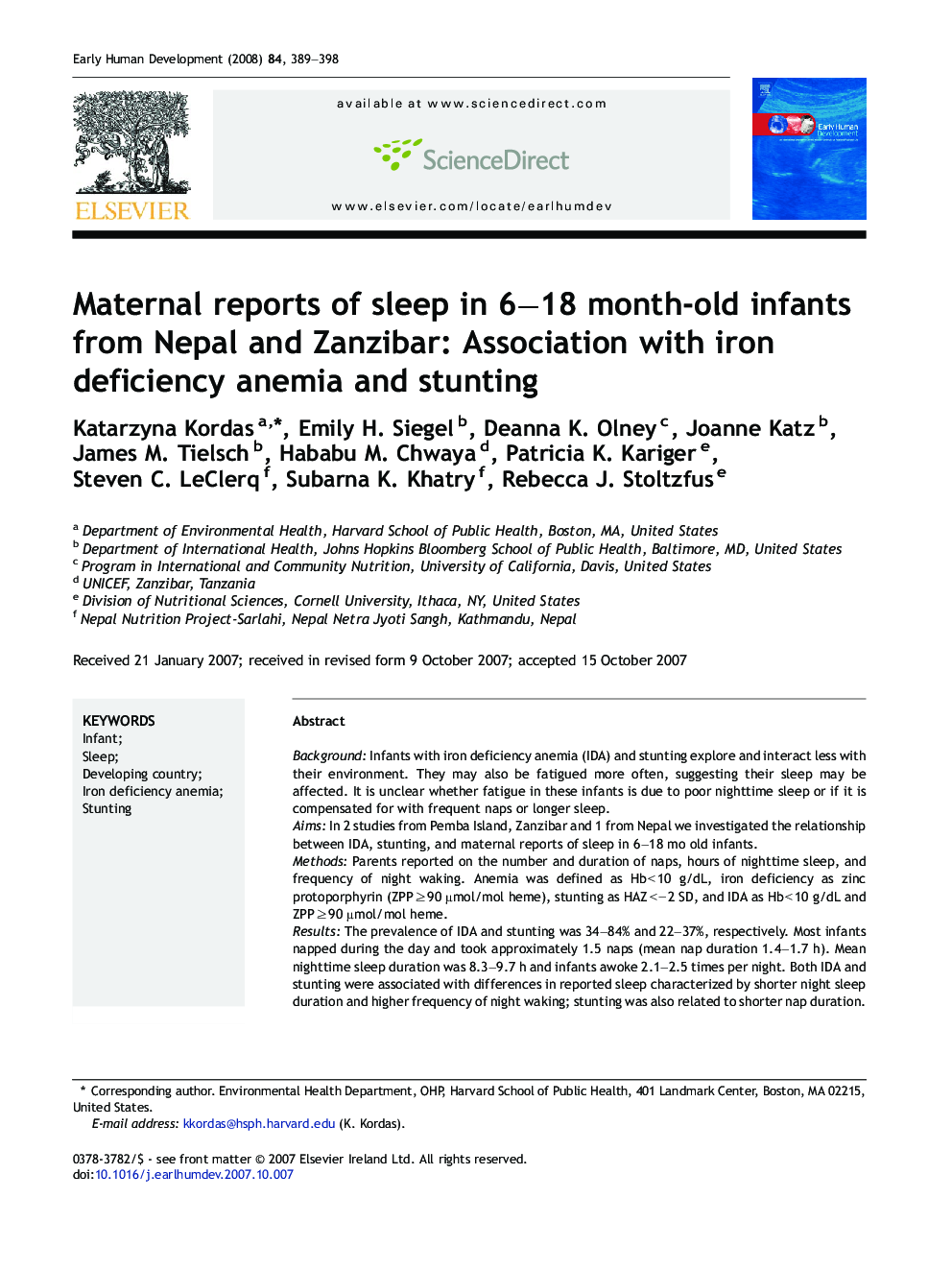| Article ID | Journal | Published Year | Pages | File Type |
|---|---|---|---|---|
| 3918208 | Early Human Development | 2008 | 10 Pages |
BackgroundInfants with iron deficiency anemia (IDA) and stunting explore and interact less with their environment. They may also be fatigued more often, suggesting their sleep may be affected. It is unclear whether fatigue in these infants is due to poor nighttime sleep or if it is compensated for with frequent naps or longer sleep.AimsIn 2 studies from Pemba Island, Zanzibar and 1 from Nepal we investigated the relationship between IDA, stunting, and maternal reports of sleep in 6–18 mo old infants.MethodsParents reported on the number and duration of naps, hours of nighttime sleep, and frequency of night waking. Anemia was defined as Hb < 10 g/dL, iron deficiency as zinc protoporphyrin (ZPP ≥ 90 μmol/mol heme), stunting as HAZ < − 2 SD, and IDA as Hb < 10 g/dL and ZPP ≥ 90 μmol/mol heme.ResultsThe prevalence of IDA and stunting was 34–84% and 22–37%, respectively. Most infants napped during the day and took approximately 1.5 naps (mean nap duration 1.4–1.7 h). Mean nighttime sleep duration was 8.3–9.7 h and infants awoke 2.1–2.5 times per night. Both IDA and stunting were associated with differences in reported sleep characterized by shorter night sleep duration and higher frequency of night waking; stunting was also related to shorter nap duration.ConclusionsWe found reduced sleep duration and increased night waking among infants with IDA and stunting. Because sleep plays an essential role in infant development, our findings indicate a clear need for further research into these relationships.
